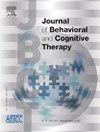Assessment and computation of sleep efficiency – Is close enough good enough?
IF 1.6
Q3 PSYCHIATRY
引用次数: 0
Abstract
Sleep efficiency (SE) is a central variable in both the delivery and titration of Cognitive Behavioral Therapy for Insomnia (CBT-I). Despite its critical role, there remains a surprising lack of consensus on how SE should be calculated. This paper examines the conceptual and operational inconsistencies surrounding SE, particularly the widespread use of "Time in Bed" (TIB) as the denominator in its computation. We argue that literal interpretations of TIB—often including pre-sleep or post-sleep activities—introduce clinically significant distortions in SE values. These distortions can lead to erroneous treatment decisions during CBT-I, such as inappropriate titration of the sleep window. We review the standard sleep diary variables, examine previously proposed alternatives like Reed and Sacco’s “Duration of the Sleep Episode” (DSE), and identify their limitations. Building on these insights, we propose a new formula for SE that more accurately reflects the patient’s intended sleep window, using “Sleep Opportunity” (SO) as a more valid denominator. We demonstrate through clinical examples how our proposed approach offers more accurate and actionable SE metrics, aligning with both patient experience and clinical judgment. Ultimately, we argue that close enough is not good enough, and a consensus definition is essential for clinical precision and research standardization in CBT-I.
睡眠效率的评估和计算——足够接近足够好吗?
睡眠效率(SE)是失眠认知行为疗法(CBT-I)的交付和滴定的中心变量。尽管它起着至关重要的作用,但令人惊讶的是,对于如何计算东南偏航,人们仍然缺乏共识。本文研究了围绕SE的概念和操作上的不一致,特别是在其计算中广泛使用“床上时间”(TIB)作为分母。我们认为,对tib的字面解释——通常包括睡眠前或睡眠后的活动——会导致临床显著的SE值扭曲。这些扭曲可能导致CBT-I期间错误的治疗决策,例如不适当的睡眠窗口滴定。我们回顾了标准的睡眠日记变量,检查了之前提出的替代方案,如Reed和Sacco的“睡眠发作持续时间”(DSE),并确定了它们的局限性。在这些见解的基础上,我们提出了一个更准确地反映患者预期睡眠窗口的新公式,使用“睡眠机会”(SO)作为更有效的分母。我们通过临床实例证明,我们提出的方法如何提供更准确和可操作的SE指标,与患者经验和临床判断保持一致。最后,我们认为足够接近并不足够好,共识定义对于CBT-I的临床精确性和研究标准化至关重要。
本文章由计算机程序翻译,如有差异,请以英文原文为准。
求助全文
约1分钟内获得全文
求助全文
来源期刊

Journal of Behavioral and Cognitive Therapy
Psychology-Clinical Psychology
CiteScore
3.30
自引率
0.00%
发文量
38
审稿时长
60 days
 求助内容:
求助内容: 应助结果提醒方式:
应助结果提醒方式:


